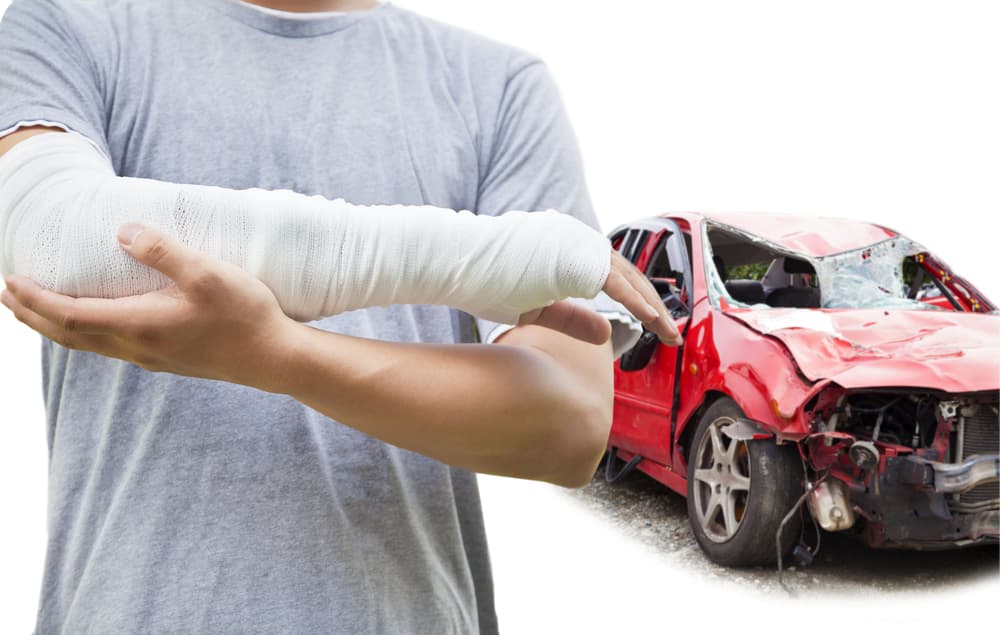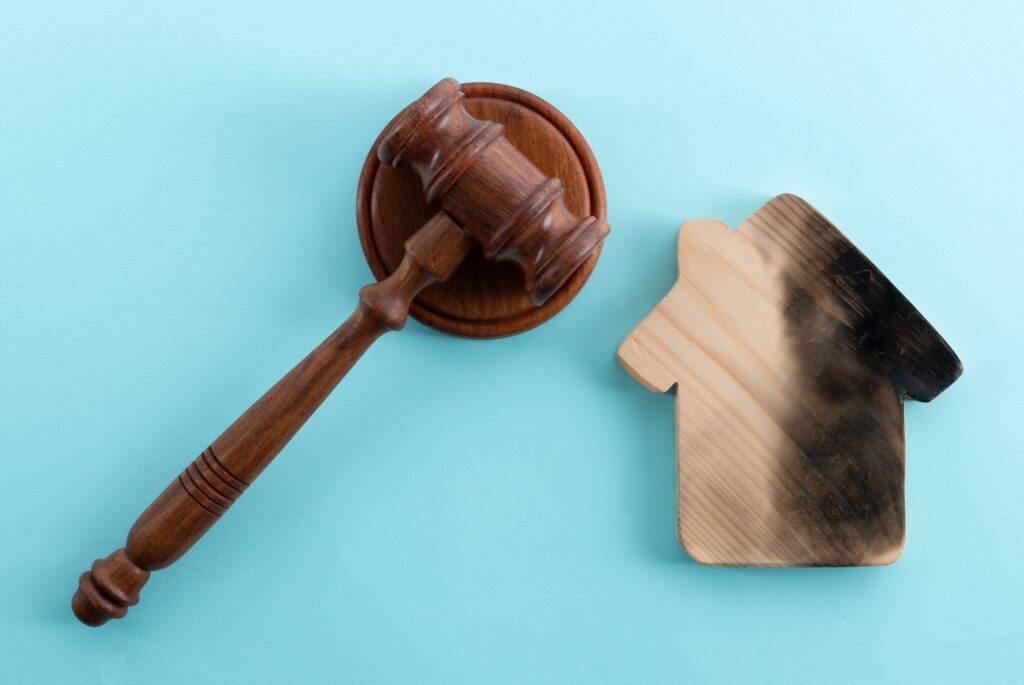Sitting at home after a serious accident is a disorienting experience. The immediate chaos has passed, but now a different kind of storm begins to gather. The physical pain is constant, the phone calls from insurance adjusters are starting, and a stack of mail, mostly bills, is growing on your kitchen counter.
You are thinking about the future and what it holds, which leads many people in your position to ask about the damages you can sue for to get their lives back on track. This process is not about seeking a windfall but about seeking fairness and the resources needed to heal and move forward.
When you are trying to recover, you often face a mix of challenges all at once. It is a deeply personal and stressful time that affects every part of your life.
- You might be dealing with the physical recovery from your injuries, attending frequent doctor's appointments across town.
- You are likely facing financial pressure from being unable to work while medical and household bills continue to arrive.
- You could be experiencing emotional distress, like anxiety about getting behind the wheel again on a busy road like I-35.
This guide will break down the types of compensation, known in the legal world as "damages," that are available in a Texas personal injury claim
The Two Main Categories of Damages You Can Sue For
In Texas, the law generally separates the damages you can sue for into two primary categories. Think of them as two different buckets used to account for the losses you have suffered.

The first bucket is for things with a clear price tag, and the second is for losses that are much more personal and do not come with a receipt.
Economic Damages: This refers to all the financial losses you have incurred because of the accident. These are the tangible, calculable costs that can be added up with invoices, bills, and pay stubs.
Non-Economic Damages: This category covers the non-financial, personal losses that result from an injury. These are the human costs of an accident, reflecting the physical pain and emotional toll it takes on a person's life.
Both types of damages are a core part of a personal injury claim, designed to make the injured person "whole" again, at least from a financial standpoint.
Breaking Down Economic Damages: The Tangible Costs
Economic damages form the financial foundation of a personal injury claim. They are meant to reimburse you for every dollar you have lost or had to spend because of someone else's negligence. These costs are often easier to prove because they come with a paper trail.
Medical Expenses (Past and Future)
After an accident, medical bills are usually the first and most significant financial burden. These damages cover not only the bills you have already received but also the estimated cost of any medical care you will need in the future.
Whether you received initial treatment at Baylor Scott & White in Waco or are now seeing specialists in Austin, these costs add up quickly.
Medical expense damages include a wide range of services and products necessary for your recovery.
- Emergency room visits and hospital stays
- Surgeries and procedures
- Physical therapy, rehabilitation, and chiropractic care
- Prescription medications and medical devices like crutches or wheelchairs
- In-home nursing care
Lost Wages and Lost Earning Capacity
An injury does more than just cause pain; it often prevents you from working. The income you lose while you cannot perform your job is a significant economic loss.
This is not just about the hours missed right after the accident. It also includes future income you might lose. There is a key difference between these two concepts.
- Lost Wages: This is the money you were not able to earn while you were out of work recovering. This is calculated based on your past pay stubs and work history.
- Lost Earning Capacity: This is a more forward-looking concept. It applies if your injuries permanently affect your ability to do your job or any job. If a construction worker in Killeen suffers a back injury and can no longer lift heavy materials, their ability to earn a living in their chosen field is diminished.
A claim for lost earning capacity seeks compensation for that future loss of income.
Property Damage
Property damage is a major component of your claim if your accident involved a vehicle, like a car, truck, or motorcycle. This covers the cost to repair your vehicle to its pre-accident condition.

If the repair costs are more than the vehicle is worth, the insurance company will declare it a "total loss," and you are owed the vehicle's fair market value right before the crash. Imagine your car was damaged in a parking lot near the Magnolia Market Silos; the compensation should cover getting it fixed or replaced.
This category is not limited to just your car.
- The cost to repair or replace your vehicle
- Compensation for any personal items inside the vehicle that were destroyed, such as a laptop, phone, or child's car seat
- The cost of a rental car while your vehicle is being repaired
Non-Economic Damages: The Intangible Impacts
Some of the most severe consequences of an accident are not financial. Non-economic damages are meant to compensate you for the human toll of an injury and how it has affected your quality of life, happiness, and emotional state.
While no amount of money can erase these struggles, the legal system provides this path to acknowledge their reality and provide a measure of justice. These are some of the non-economic damages you can sue for.
Pain and Suffering
This is one of the most well-known types of non-economic damages. It refers to the physical pain and general discomfort you have endured because of your injuries.
It accounts for the past, present, and future pain associated with your condition. The court will consider the type of injury, the severity of the pain, and how long you are expected to suffer from it.
Factors that contribute to a pain and suffering award include:
- The severity and duration of the physical pain from the injuries.
- The discomfort of medical treatments, surgeries, and rehabilitation.
- The general loss of comfort and the struggle with daily activities that were once painless.
Mental Anguish and Emotional Distress
Mental anguish goes beyond the physical side of an injury. It addresses the emotional and psychological trauma that follows a serious accident. Many people develop significant emotional challenges after a traumatic event, and these damages are intended to acknowledge that suffering.
It is one thing to heal a broken bone; it is another to heal the mind.
This compensation covers a range of emotional struggles.
- Anxiety and Depression: Feelings of fear, worry, sadness, or hopelessness that arise after the accident.
- Post-Traumatic Stress Disorder (PTSD): This may involve flashbacks, nightmares, and severe anxiety related to the traumatic event, such as a fear of driving through a busy intersection like the one near the University of Texas campus.
- Loss of Enjoyment of Life: This accounts for the loss of happiness and ability to participate in activities and hobbies you once loved, whether that is fishing on Belton Lake or hiking in the Texas Hill Country.
Physical Impairment and Disfigurement
Physical impairment, also known as loss of consortium, refers to the loss of use of a part of your body. This could be a permanent limp, loss of mobility in a limb, or damage to your senses like sight or hearing.

Disfigurement refers to scarring, burns, or amputation that alters your physical appearance. These damages acknowledge the daily challenges and the social and emotional impact of living with a permanent physical change.
Examples of what this category covers include:
- Inability to walk, run, or stand for long periods.
- Permanent scarring on your face, arms, or other visible parts of your body.
- The need to use a prosthetic limb.
What About Punitive Damages?
In some rare cases, another category of damages becomes relevant: punitive damages. Unlike economic and non-economic damages, which are designed to compensate the victim, punitive damages are intended to punish the at-fault party and deter similar behavior in the future.
These are not among the typical damages you can sue for in most personal injury cases. Punitive damages, also called exemplary damages in Texas, are only awarded in situations where the defendant's conduct was especially reckless or malicious. This requires proving the defendant acted with "gross negligence."
- Gross Negligence: This is more than simple carelessness. It means the defendant was aware that their actions created an extreme degree of risk to others but proceeded anyway with conscious indifference to the rights, safety, or welfare of others.
- Examples: A drunk driver who causes a crash, a trucking company that knowingly forces its drivers to violate safety regulations, or a person who intentionally tries to cause harm.
- Purpose: The goal is to send a message to the community that such behavior will not be tolerated. In Texas, there are legal caps that limit the amount of punitive damages that can be awarded in most cases.
Putting the Pieces Together on Your Path Forward
Recovering from an accident is a journey, and understanding the financial, physical, and emotional components of your claim is a step in that process. The system of damages is designed to provide the resources you need to cover your expenses, account for your suffering, and help you build a new normal.
If you are dealing with the effects of an accident in Austin, Waco, Killeen, Temple, or anywhere in Central Texas, you do not have to figure this all out by yourself. The legal process is complex, and having someone to guide you can make a significant difference.

At Lorenz & Lorenz, PLLC, our team is here to listen to your story and explain your options. We are dedicated to helping people who have been hurt get the accountability and compensation they deserve.
- We can help you understand the full extent of your damages.
- We will handle communications with the insurance companies for you.
- We are prepared to build a strong case on your behalf.
For a no-cost, no-obligation review of your case, please reach out to Lorenz & Lorenz, PLLC. You can contact our Austin office at (512) 477-7333 or our Waco office at (254) 662-4800 to speak with our team.
Frequently Asked Questions About Accident Damages
How are non-economic damages like pain and suffering calculated in Texas?
There is no simple formula. Insurance companies and juries consider several factors, including the severity of the injury, the impact on your daily life, the length of your recovery, and the permanency of your condition.
Sometimes, a "multiplier" method is used, where economic damages are multiplied by a number (e.g., 1.5 to 5) based on the severity of the injury. Other times, a "per diem" (per day) rate is assigned for each day of suffering.
Is there a limit or cap on the damages I can receive in Texas?
For most standard personal injury cases, like a car accident, there is no cap on economic or non-economic damages in Texas. The main exception is for punitive damages, which are capped. Another notable exception is in medical malpractice claims, which have a strict cap on non-economic damages.
What happens if I was partially at fault for the accident?
Texas follows a "proportionate responsibility" rule, also known as modified comparative fault. This means you can still recover damages if you are not found to be 51% or more at fault for the accident.
Your final compensation award will be reduced by your percentage of fault. For example, if you are found 20% at fault for an accident and are awarded $100,000, you would receive $80,000.
Do I have to go to court to receive these damages?
Not necessarily. The vast majority of personal injury claims are settled out of court through negotiations between your personal injury attorney and the insurance company. A settlement is an agreement to resolve the case for a specific amount of money.
However, if a fair settlement cannot be reached, filing a lawsuit and being prepared to go to trial is the next step to pursue the compensation you are owed.